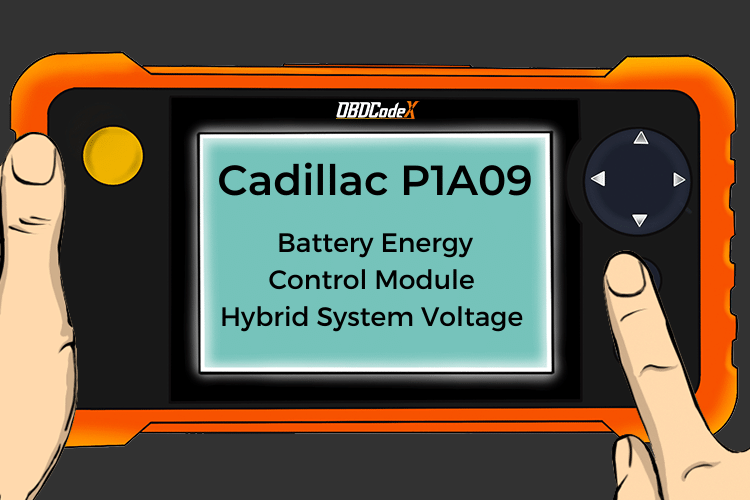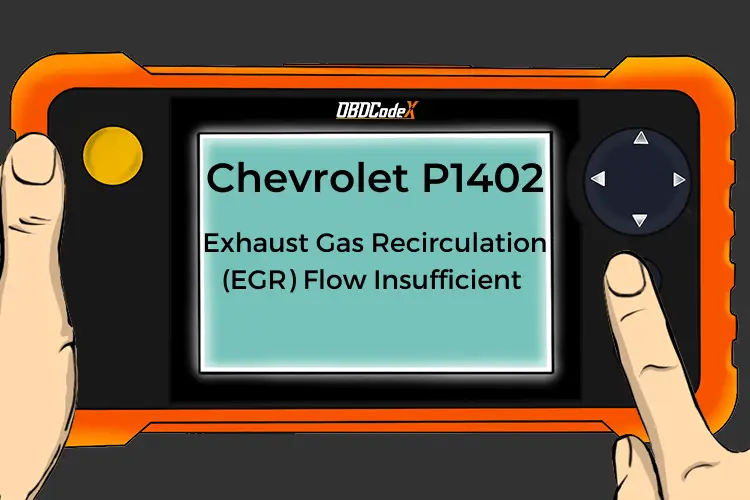P049C: Exhaust Gas Recirculation B Flow Excessive Detected
Is your scanner showing P049C?
No worries. We'll show you what it means and how to deal with it.
P049C: Exhaust Gas Recirculation B Flow Excessive Detected
OVERVIEWWhat Does The P049C Code Mean?
A stored code P049C means that the powertrain control module (PCM) has detected a malfunction in the exhaust gas recirculation (EGR) system “B” flow for a particular step-down setting.
The designation “B” refers to a certain position of the step-down EGR valve. Either an electrical problem or a mechanical problem may cause a code P049C to be stored.
The step-down EGR valve system is critical in the reduction of nitrous oxide (NOx) particles that are released into the atmosphere as a result of internal combustion and diesel engine operation. NOx has been proven to be a contributing factor in ozone depletion from exhaust emissions. NOx emissions are regulated by federal mandate in North America.
The step-down EGR system is designed to deliver a portion of spent exhaust gases back to the intake manifold, in measured increments. Once exhaust gases are re-circulated back to the intake manifold, they are burned a second time.
EGR system flow is monitored using one of several diverse methods, including:
- The differential pressure feedback EGR (DPFE) sensor is positioned in or near the tube which connects the EGR valve and the exhaust manifold. When the EGR valve is opened, pressure in the EGR tube and DPFE sensor is increased. DPFE sensor voltage reflects the change accordingly
- The manifold absolute pressure (MAP) sensor is used to monitor EGR flow in other vehicle applications. In this type of system, when the PCM commands the step-down EGR opened to a particular stage, a proportionate change in MAP sensor voltage is also expected
- Some vehicles use the manifold air temperature (MAT) sensor to monitor EGR flow. When the EGR is opened to the desired amount (and hot exhaust gases are allowed to flow into the intake manifold), an appropriate variation in MAT sensor voltage is expected
A code P049C will be stored and a malfunction indicator lamp (MIL) may be illuminated if the PCM fails to see the desired degree of change from the respective “B” EGR flow monitoring sensor system.
In this case, there is a detected too high expected amount of flow. In some vehicle applications, multiple ignition cycles (with a failure) are required for MIL illumination.
What Are The Symptoms Of The P049C Code?
Symptoms of a P049C trouble code may include:
- Decreased engine performance
- Excessive rich or lean exhaust
- Delayed engine start-up (especially when cold)
- Diminished fuel efficiency
What Are The Potential Causes Of The P049C Code?
Causes for this P049C engine code may include:
- Defective EGR valve
- Carbon clogged EGR passage/s
- Collapsed or cracked DPFE hoses
- Faulty DPFE, MAP, or MAT Sensor
- Open or shorted circuits to the EGR valve or related sensors
How Serious Is This P049C Code?
Overall engine performance and fuel efficiency may be adversely affected by the conditions which contribute to a code P049C. It should be categorized as severe.
How Can You Fix The P049C Code?
Begin your diagnosis by locating the vehicle diagnostic connector and retrieving all stored codes with the scanner. Record this information in case you need it as the diagnosis unfolds. Now, test-drive the vehicle to see if the code is immediately reset.
You may discover a solution to your EGR system problems by searching vehicle technical service bulletins (TSB) for entries which match the vehicle, codes stored, and symptoms exhibited. TSB entries are derived from thousands of repair specialists and may contain very helpful diagnostic hints.
You will need to gain access to a diagnostic scanner, a digital volt/ohmmeter (DVOM), and a reliable vehicle information source if the P049C is stored right after clearing the codes.
A visual inspection of the EGR valve and all related wiring and connectors is in order next. Focus on wiring harnesses which are routed near hot exhaust manifolds and the jagged edges often associated with exhaust shields.
To prevent controller damage, disconnect all related control modules from the circuit before testing resistance/continuity with the DVOM.
Utilize the scanner to manually activate the EGR system. Most EGR systems require a certain rate of speed before automatic activation will occur. Using wiring diagrams and connector pin out charts, located in your vehicle information source, test each individual EGR valve connector circuit (with the DVOM).
Circuits which do not conform to manufacturer’s specifications will need to be followed back to the source (usually the PCM connector) and retested. If the output signal from the PCM is not detected, suspect a defective PCM or PCM programming error. Repair or replace open/shorted circuits as required.
Use the DVOM to test the actual EGR valve and related sensors if all circuits are in compliance with manufacturer’s specifications. Your vehicle information source will once again yield information for testing these parts. If the step-down EGR valve and/or any related sensors do not align with manufacturer’s specifications, they should be replaced.
- This code should be exhibited only in vehicles equipped with step-down EGR valve systems
Recommended Parts
Below are some recommended auto parts to help you address the trouble code affecting your vehicle and get it running smoothly again:
>>> EGR Valve
>>> Dorman 46019 High Temp Emissions Hoses
>>> Exhaust Back Pressure Sensor
>>> MAP Sensor
>>> MAT Sensor
>>> WORKPRO 582-piece Crimp Terminals, Wire Connectors, Heat Shrink Tube, Electrical Repair Kit
>>> INNOVA 5210
>>> KAIWEETS Digital Multimeter
Note: During the purchasing process, please check carefully whether the part you want to buy fits your car!
Reference Sources
P049C Exhaust Gas Recirculation B Flow Excessive Detected, OBD-Codes.




